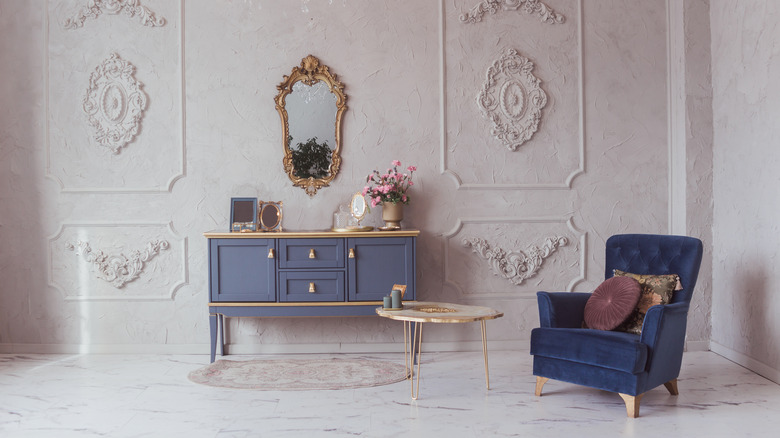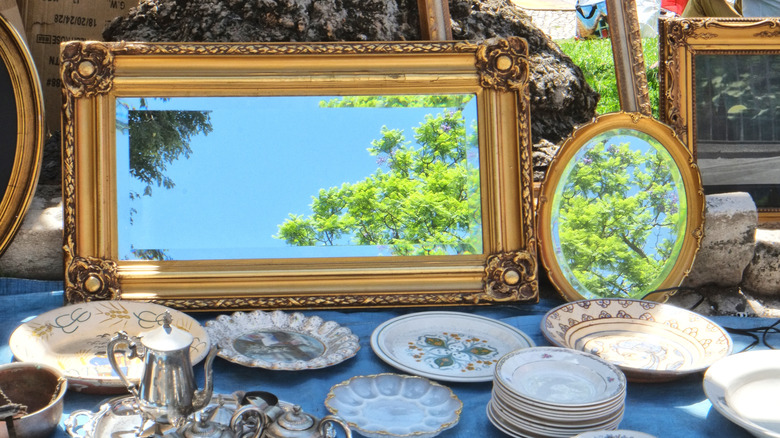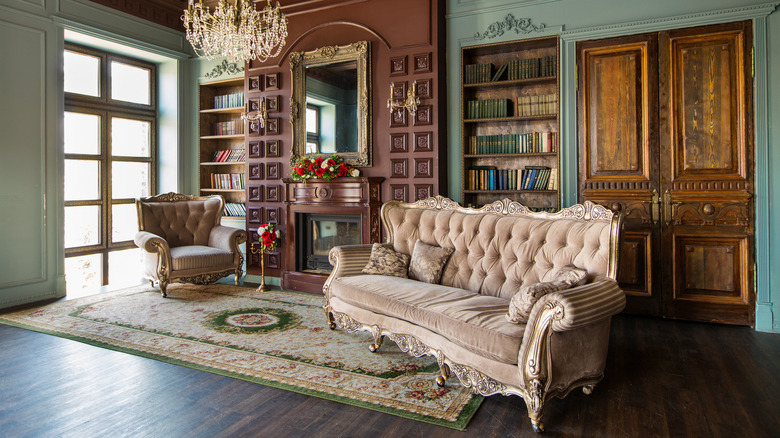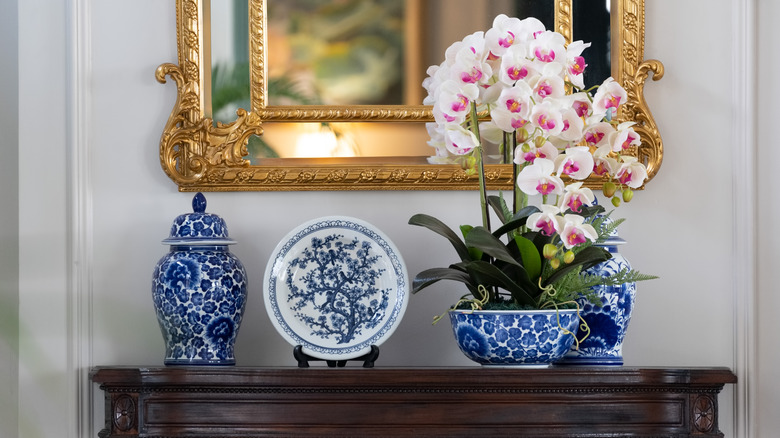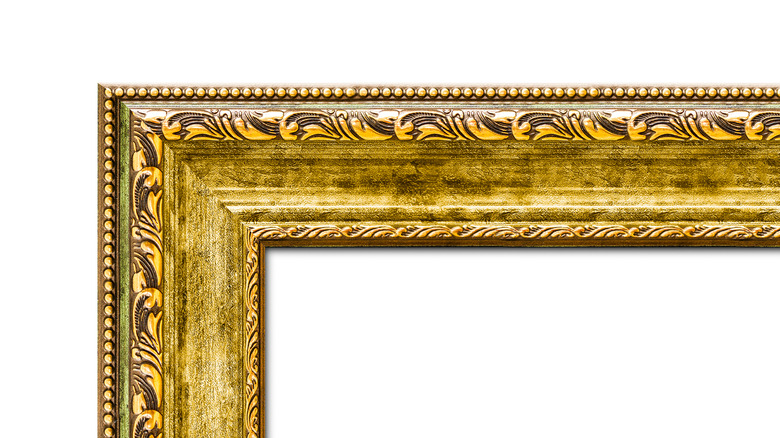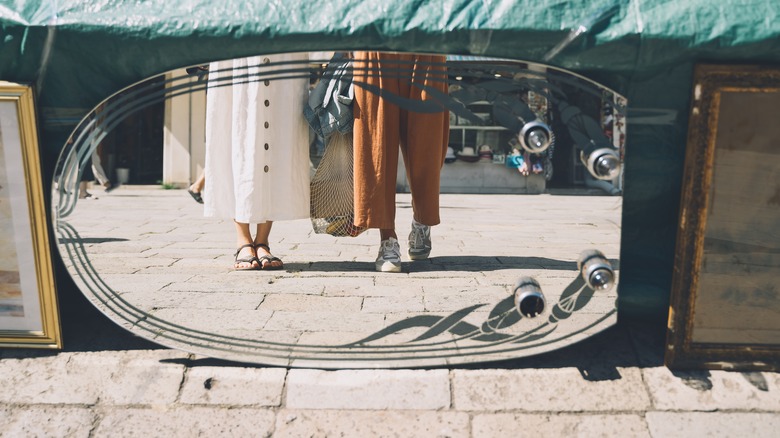How To Shop For Vintage Mirrors
Antique mirrors are an amazing way to add character and style to your home. They can be used in so many ways, but most importantly, they add the perfect vintage touch to any room. Mirrors reflect light, which makes a room seem bigger and brighter, and Ski Country Antiques recommends using vintage mirrors in any part of your home that needs some additional light or visual interest. They come in all different shapes, sizes, and styles so there is something for everyone.
Whether you're looking for a vintage mirror to hang above your fireplace or in the entryway of your home, you'll find that they are available in a variety of styles and sizes to suit every taste and budget. Finding a vintage mirror doesn't have to be difficult — with a little bit of research and knowledge about different styles and how to identify age and condition, you can find exactly what you're looking for without breaking the bank. Here are some tips on how to find the perfect vintage mirror, including where to shop, and how to ensure you're getting a high-quality product that can be passed down from generation to generation.
Where to shop for vintage mirrors
If you're looking for vintage mirrors, there are a few places to find them. The best place to start is online, where it's easy to get a good idea of what's available. Sites like eBay and Etsy have tons of new vintage mirrors listed every day. Just be sure to read all descriptions carefully before bidding or buying anything so that you know exactly what to expect.
Flea Market Insiders also recommends that you check out antique stores or flea markets when shopping for vintage mirrors. Search through local listings online as well as in person. Some antique stores will even mail items to you if they don't have anything in your area that catches your eye. However, you'll need to do some research and compare prices before buying anything because some antique stores mark up prices more than others do.
Another way to find vintage mirrors is through estate sales or auctions. These tend to be more expensive than buying from an individual seller, but if you're looking for something specific, it may be worth it.
Know what style you're looking for
The first step in finding the perfect vintage mirror is to understand the types of mirrors available. Some are very ornate, while others are more minimalistic. Here are some popular styles you'll encounter while shopping.
Baroque mirrors feature ornate frames with intricate designs. These can be made from materials such as metal and wood. The frame often features scrolling lines and floral details. Venetian mirrors are characterized by large frames with elaborate designs etched into them. These frames often feature gold or silver accents that add an extra layer of sophistication.
Rococo-style mirrors feature curved frames with intricate carvings that are usually made out of wood or plaster. They typically include leafy patterns and other decorative elements that evoke a sense of elegance and luxury. According to Nimbus Antiques, many antique mirrors that you'll find when shopping were made in the Victorian era. They are characterized by their heavy carving style and are typically made from gilded wood.
Choose the right size and shape
Vintage mirrors come in many shapes and sizes, including round, rectangular and oval shapes. It's important to think about the style of your room when choosing a mirror. For example, if you have a modern space that features lots of straight lines, you may want to go with a rectangular mirror with a simple frame. If your space has lots of curves, opt for an arched or circular mirror with ornate details.
The size of your space is also important when selecting the right mirror. Think about where it will hang and how much space it will take up on your wall or dressing table. Build suggests that you consider whether you want it to be the focal point of the room or if it should blend in with other pieces of furniture in the room. For example, if you have a large wall space above your mantle or fireplace that would benefit from an oversized mirror, choose one that matches your other furniture pieces in scale and style.
Frame materials for vintage mirrors
One of the easiest ways to identify the age of a mirror is by looking at its frame. Antique frames were often decorated with intricate detailing, such as carvings and engravings. Many framed mirrors from this period also have hand-painted details. Manufacturers in more recent times have tried to replicate these styles, but most modern frames lack the same level of detail found on genuine antiques.
When it comes to vintage mirrors, there are two main framing materials that are used: wood and metal. If a mirror is made of metal, it's usually copper or brass. These metals are prone to oxidation and tarnish over time. According to Hemswell Antique Centres, it's important to look closely at these materials before making a purchase because metal can easily be damaged by water or cleaning products. Wood, on the other hand, can last for many years but needs regular maintenance and care. Wooden mirrors may be gilded to give them a gold or bronze color. Check for any signs of damage such as chips, cracks, or warping before making your purchase.
How to identify the age of a vintage mirror
Once you know what type of mirror you want, it's important to determine its age and condition. There are some telltale signs that a mirror is a true antique. The glass on older mirrors is usually thicker than modern glass and will feel heavier when you pick it up. Look at the edges of the mirror for signs of oxidation, which appears as dark splotches on the glass, notes Invaluable.
Mirrors featuring glass with bubbling or waves in it are also likely to be genuine antiques. The back side of a vintage mirror will usually show signs of its age as well. Look for labels that indicate when the piece was made or who crafted it. Keep an eye out for any identifying marks from manufacturers — many antique pieces had stamps from companies on their backings, which can help give you more information about where your mirror came from and how old it is.
It's also vital to verify the mirror's condition before making a purchase. Inspect the frame thoroughly for any cracks or chips; these are signs that it has been damaged over time and may need to be repaired before being used in your home. Finally, check for any water damage; if there is any present on the frame or backing, it could indicate that the mirror was exposed to moisture at some point in its life, which could cause further deterioration over time if not addressed.
